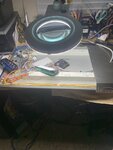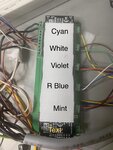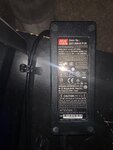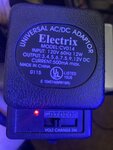second_decimal
Newbie

Hi.. i have an aquarium light fixture that is a hybrid T5 and LED set up. the LED system consists of a bluefish wireless controller, a breakout board to convert 5v to PWM and 1000Ma meanwell drivers for 5 dimmable color channels.
all are powered by a meanwell ac/dc converter that puts out 48v 2.5A, 120W max. the T5 part is AC powered with traditional fluorescent ballasts with on/off functionality. there are also 3 case fans present that are powered by a separate adjustable voltage "wall wart"? power supply. I would like to move one of the fans to run in conjunction with the LED active status. basically i would like the fan to kick on whenever the LED's are on.
i have AC power and 48v dc power in the fixture that i can tap into. the bluefish also has an open channel (6 channels. 5 for led and one left open) but apparently not able to control the fan. can someone try and explain to me what i would need to separate the fan control? Fan only has red and black wires but i can replace it with a 3 or 4 wire PWM one.
thank you in advance.




all are powered by a meanwell ac/dc converter that puts out 48v 2.5A, 120W max. the T5 part is AC powered with traditional fluorescent ballasts with on/off functionality. there are also 3 case fans present that are powered by a separate adjustable voltage "wall wart"? power supply. I would like to move one of the fans to run in conjunction with the LED active status. basically i would like the fan to kick on whenever the LED's are on.
i have AC power and 48v dc power in the fixture that i can tap into. the bluefish also has an open channel (6 channels. 5 for led and one left open) but apparently not able to control the fan. can someone try and explain to me what i would need to separate the fan control? Fan only has red and black wires but i can replace it with a 3 or 4 wire PWM one.
thank you in advance.




Last edited:
